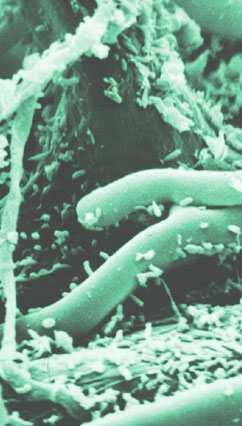Antibiotic step discovered
 Australian researchers have discovered an important mechanism in the creation of antibiotics.
Australian researchers have discovered an important mechanism in the creation of antibiotics.
Monash University researchers investigated what are known as ‘glycopeptide antibiotics’, including vancomycin, a drug used as a last resort in treating Golden Staph (Staphylococcus aureus).
Vancomycin is produced naturally by bacteria, biosynthesised by a process during which various amino acids are linked to form the peptide involved, Associate Professor Max Cryle said.
“It’s the biosynthesis that produces the compounds we use in the clinic, so to make new compounds we need to understand exactly how this process works,” he said.
“Understanding the details within this process is challenging – this is what’s really held the field back,” he said.
The researchers were able to identify the point in the process where ‘halogenation’ occurs, which in this case incorporates the chlorine atom, and plays a significant role in the activity of glycopeptide antibiotics.
Knowing when and where this occurs should enable scientists to manipulate this part of the process, and therefore the antibiotic end product.
“This means that we can potentially start to make modified compounds, which is exciting,” Associate Professor Cryle said.
Also, while vancomycin was used in this case, the finding may apply to other types of antibiotics.
“There are a lot of both existing and new antibiotics that are peptide-based and that are made by the same machinery, so finding out how this works in our system means we can take that knowledge and apply it to all those compounds,” he said.
The research was conducted in vitro at Monash BDI and validated in bacteria in Germany, after over three years was spent establishing the tools required to conduct it.
The researchers are now working on ways to re-engineer vancomycin-type antibiotics.








 Print
Print